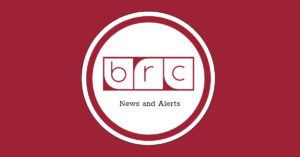Title I, Keeping American Workers Paid and Employed Act of the CARES Act – Self Employed briefing by Kim Ripberger
Additional funding of $310 billion for the Paycheck Protection Program has been approved by Congress and was signed into law on April 24, 2020 by President Trump.
Interim Final Rule 13 CFR Part 120, Business Loan Program Temporary Changes; Paycheck Protection Program – Additional Eligibility Criteria and Requirements for Certain Pledges of Loans was issued on April 14, 2020 to provide the supplemental guidance needed for self-employed individuals.
Self-employed individuals must satisfy three conditions to apply for a loan under the Paycheck Protection Program (“PPP”):
- In operation on February 15, 2020.
- Principle place of residence is in the U.S.
- Have filed or will file a Form 1040 Schedule C for 2019*.
*No employees – amount on Schedule C, Line 31 must be greater than 0.
*Self-employment income of active general partners should be included on the Partnership’s PPP application. The partner’s “payroll” amount is limited to $100,000.
The maximum loan amount determination depends on whether the self-employed individual has employees.
CALCULATION WITHOUT EMPLOYEES:
- USE the net profit amount located on the 2019 IRS Form 1040 Schedule C, Line 31. If a 2019 Form 1040 return has not been filed, complete the Schedule C form to calculate the net profit amount. NOTE: This amount is capped at $100,000.
- CALCULATE the average monthly net profit by dividing the net profit amount from #1 by 12 months.
- MULTIPLY the average monthly net profit calculated in #2 by 2.5.
- ADD the outstanding amount of any Economic Injury Disaster Loan (“EIDL”) made between January 31, 2020 and April 3, 2020 that the applicant needs to refinance LESS the amount of any advance under the EIDL COVID-19 loan since the grant does not require repayment.
REQUIRED DOCUMENTATION: APPLICATION WITHOUT EMPLOYEES
- 2019 Form 1040 Schedule C
- Form 1099-MISC detailing nonemployee compensation received (Box 7), if applicable.
- Proof of self-employment via invoice, bank statement, or proof of record.
- Proof of operations on or around February 15, 2020 via 2020 invoice, bank statement or proof of record.
CALCULATION WITH EMPLOYEES:
- COMPUTE the 2019 payroll by adding the following:
a. USE the net profit amount located on the 2019 IRS Form 1040 Schedule C, Line 31. If a 2019 Form 1040 return has not been filed, complete the Schedule C form to calculate the net profit amount up to $100,000. The net profit amount must be limited to $100,000. If the net profit amount is less than zero, use zero.
b. 2019 gross wages and tips paid to employees whose principal place of residence is in the U.S. is as follows
i. 2019 IRS Form 941 Taxable Medicare wages & tips (line 5c – column 1) from each quarter
ii. PLUS – Pre-tax employee contributions for health insurance or other fringe benefits excluded from Taxable Medicare wages & tips
iii. SUBTRACT– any amounts paid to any individual employee in excess of $100,000.
iv. SUBTRACT– any amounts paid to any employee whose principal place of residence is outside the U.S.
c. 2019 employer health insurance contributions (health insurance component of Form 1040 schedule C line 14); retirement contributions (Form 1040 Schedule C, line 19); and state and local taxes assessed on employee compensation (SUTA) from state quarterly reporting forms.
2) CALCULATE the average monthly amount by dividing the payroll amount calculated in #1 by 12 months.
3) MULTIPLY the average monthly amount calculated in #2 by 2.5.
4) ADD the outstanding amount of any EIDL made between January 31, 2020 and April 3, 2020 that the applicant needs to refinance LESS the amount of any advance under the EIDL COVID-19 loan since the grant does not require repayment.
REQUIRED DOCUMENTATION: APPLICATION WITH EMPLOYEES
- 2019 Form 1040 Schedule C
- Form 941 (or other tax forms or equivalent payroll records that contain similar information)
- State quarterly wage unemployment insurance tax reporting forms from each quarter in 2019 (or equivalent payroll records)
- Evidence of any retirement and health contributions, if applicable.
- A payroll statement or similar documentation from the pay period that covered February 15, 2020 as proof of operations on February 15, 2020.
LOAN TERMS
- Loan Term: 2 years
- Interest Rate: 100 basis points or one percent
- No personal guarantee
- Section 7 of the Small Business Act standard fees are waived.
- Six-month payment deferral after disbursement. However, interest will accrue during the payment deferral.
WHAT EXPENSES ARE COVERED? NOTE: Minimum 75% = Payroll Costs **
- Owner compensation replacement as calculated based on the 2019 net profit (see above);
- Employee payroll costs for employees whose principal place of residence is in the U.S., if the borrower has employees;
- Mortgage interest payments on any business debt on real or personal property, business rent payments, and business utility payments. These business expenses must have been claimed or entitled to be claimed as a deduction on the borrower’s 2019 Form 1040 Schedule C for them to be allowed to be paid in the eight-week period following the first loan disbursement (“covered period”). Expenses cannot be used during the eight-week covered period in 2020 if the expenses were not claimed or entitled to be claim in 2019 Form 1040 Schedule C.
- Interest payments on any other debt obligations that were incurred before February 15, 2020. NOTE: these amounts are not eligible for PPP loan forgiveness.
- Refinancing an EIDL loan made between January 31, 2020 and April 3, 2020 if the EIDL was used for payroll costs. Proceeds from any advance up to $10,000 on the EIDL loan will be deducted from the loan forgiveness amount on the PPP loan. If the EIDL was not used for payroll costs, it does not affect the amount of the PPP loan.
** There is some uncertainty whether or not loan proceeds used to pay “owners compensation” count towards the definition of “payroll costs” for the purpose of meeting the 75% requirement.
LOAN FORGIVENESS
Previously-discussed benefits concerning the PPP loan’s eligibility to be forgiven on a tax-free basis under Section 1106 of the CARES Act were eroded with the issuance of the Internal Revenue Service’s (“IRS”) Notice 2020-32 on April 30, 2020. One of BRC’s Tax Partners, Ron Kuyath, CPA discussed the implications related to Notice 2020-32. Click: Expenses Paid with PPP Loan Proceeds are Nondeductible for Tax Purposes
The amount forgiven can include the entire PPP loan plus accrued interest. There is some uncertainty related to owners’ compensation since there is no corresponding deduction taken for those amounts. Please remember the expenses associated with the forgiveness are not deductible for tax purposes as noted in IRS Notice 2020-32.
The maximum amount eligible for forgiveness includes the SUM of the following payments paid over the eight-week covered period that begins on the date the loan proceeds are received:
- At least 75%** of the loan proceeds must go to payroll costs as defined below:
- EMPLOYEE – Payroll costs including salary, wages, and tips, up to $100,000 of annualized pay per employee as well as covered employee-only benefits including health care, retirement contributions, and SUTA paid by the employer (a maximum amount per individual of $15,385 for eight weeks).
- OWNER – Owner compensation replacement based on 2019 net profit as described above with forgiveness of such amounts LIMITED to 8/52 weeks of 2019 net profit but excluding any credits claimed under Sections 7002 or 7004 of the Families First Coronavirus Response Act.
** There is some uncertainty whether or not loan proceeds used to pay “owners compensation” count towards the definition of “payroll costs” for the purpose of meeting the 75% requirement.
- The balance of the loan proceeds will be eligible for forgiveness if used in one of the following manners to the extent that these expenses are deductible on Form 1040 Schedule C:
- Mortgage interest for loans originating prior to February 15, 2020,
- Rent payment on leases entered into prior to February 15, 2020, and
- Utility payments under service agreements dated prior to February 15, 2020.
LOAN FORGIVENESS DOCUMENTATION
- If the borrower has employees, Form 941 and state quarterly unemployment insurance tax reporting forms, including any evidence of any retirement and health insurance contributions will be required.
- Evidence of business rent, business mortgage interest payments on real or personal property, or business utility payments during the covered period.
- 2019 Form 1040 Schedule C that was provided at the time of the PPP loan must be used to determine the amount of the net profit allocated to the owner during the covered period.
Click- PAYCHECK PROTECTION PROGRAM (PPP) INFORMATION SHEET: BORROWERS – When Can I Apply
Click- SBA Interim Final Rule (Issued April 14, 2020)
We will be continually monitoring additional guidance as it is released and will provide updated information on this page as it becomes available, so please check back often. In addition, please feel free to reach out to your BRC advisor with any questions you may have.
![]()

Kimberly Jessup Ripberger Assurance Partner, CPO, CPA
Kimberly is an assurance partner at our firm with over 20 years in public accounting. Her previous experience included working in Industry in process improvement and project management. She works primarily with clients involved in the governmental, non-profit and affordable housing industries, including tax credit properties, U.S. Department of Housing and Urban Development, and […]


